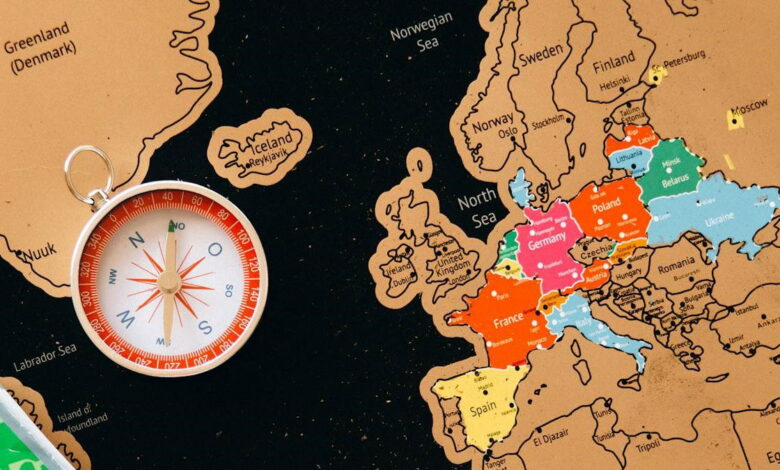EU passenger transport trends « Euro Weekly News


Map of Europe. Credit: Pexels, Nataliya Vaitkevich
For expats living in the EU, The Key Figures on European Transport 2024 report from Eurostat provides fascinating insights into how people across Europe are travelling.
Understanding your region’s passenger transport trends can make navigating your new home easier and more eco-conscious. Here’s what you need to know.
Cars remain King, but alternatives are growing
Passenger cars remain the most popular way to get around the EU, representing 72.2 per cent of all passenger kilometres in 2022. For expats in car-centric countries like Italy with the highest car ownership at 694 cars per 1,000 inhabitants, owning a car might be a practical necessity.
However, if you’re relocating to cities like Paris, Amsterdam, or Vienna, consider using public transport or biking. These areas have invested heavily in eco-friendly and urban mobility solutions, and car use is significantly lower.
Flying high with air travel across Europe
For expats travelling frequently between their home country and the EU, air transport is rebounding after the COVID 19 pandemic lows. In 2022, 13.1 per cent of passenger kilometres in the EU were covered by air travel, with tourism-heavy countries like Croatia leading the way – just over 40 per cent of passenger journeys were by plane.
Many expats in southern Europe, especially in Spain and Portugal, benefit from budget airlines connecting smaller regional airports. Keep an eye out for low-cost airlines like Ryanair or Wizz Air, which often offer discounted routes.
Rail travel in Europe
If you’re an expat looking for a sustainable way to explore Europe, rail travel is a great choice. Countries including Austria and France lead the way, with residents travelling an impressive 1,463 km and 1,361 km per inhabitant, correspondingly, by train in 2023. High-speed networks such as the TGV in France or the ICE in Germany make train travel fast, efficient, and wonderfully scenic.
Additionally, interrail passes offer great options for expats who want to see Europe without the hassle of air travel with liquids in hand luggage, turbulence, and so on. Here’s an article on Europe’s rail operators ranked.
Travelling by buses or coaches in Europe
Buses and coaches are a lifeline for expats in regions with fewer rail options or for those seeking cost-effective travel. In countries like Malta, Hungary, and Cyprus, buses account for more than 12 per cent of passenger transport. If you’re settling in Spain or Portugal, long-distance coach operators like ALSA and FlixBus provide comfortable and affordable travel across the region and beyond.
Sailing across Europe
If you’re an expat in Greece, Malta, or coastal areas of Croatia, maritime travel is likely to be part of your journey. While seagoing vessels account for less than 1 per cent of passenger transport EU-wide, Croatia leads with 2.5 per cent. Ferries are seen as essential for island hopping or short-distance commutes in Croatia.
Best travel apps in Europe
Much of Europe’s transport systems are diverse and well-connected, making it easy to travel for work, leisure, or family visits. However, with so many options, having the right apps and services can make all the difference. Here are some recommended travel apps and online services:
- Citymapper and Moovit help you navigate bus, tram, and metro systems in urban centres with ease.
- Rail Europe and Trainline streamline long-distance and regional train travel, while Interrail passes are ideal for multi-country adventures.
- Websites including Skyscanner and Hopper can help you find cheap flights across the EU and beyond.
- BlaBlaCar connects drivers with passengers for cost-effective road trips, while SIXT offers flexible car rental options.
- Lime, Tier, and Donkey Republic are perfect for eco-conscious expats looking to rent e-scooters or bikes in major European cities.
- Omio and Rome2Rio allow you to compare trains, buses, and flights in one go, perfect for planning complex journeys.
Whether you’re commuting to work, planning a cross-border trip, or exploring your new home, understanding these trends and using the recommended apps and services can help you make the most of Europe’s transport systems.
View all travel news.




